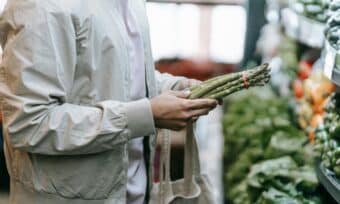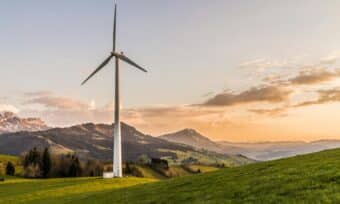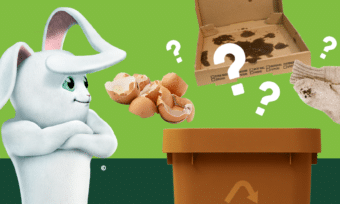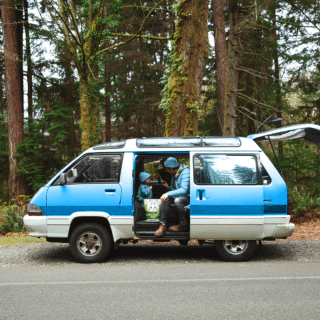
Sustainable development is increasingly at the forefront of today’s global conversation, marking a pivotal quest for the future of our planet. Here at Cascades Fluff & Tuff®, we recognize that grasping the essence of sustainable development might feel overwhelming. So, let’s break it down and guide you step by step towards easy-to-adopt practices for a positive daily impact.
Defining Sustainable Development
Think of sustainable development as a growth plan designed to cater to our current needs while ensuring future generations can meet theirs. It’s about striking a harmonious balance between economic growth, preserving natural resources, and fostering social equity.
This pursuit of sustainability isn’t a solo endeavor. It’s a collective effort involving dedicated citizens, forward-thinking companies, and global entities. Together, we’re shaping principles and launching initiatives that reduce our environmental footprint and foster a lasting economic model. These initiatives often require urgent action and effective management across various aspects, ranging from sectors like public transport and sustainable food systems to smaller, family-oriented actions.
Challenges of sustainable development
The stakes in sustainable development are diverse and intertwined, spanning several key areas:
- The economy (sustainable growth, green investments…)
- The environment (soils, water quality, biodiversity…)
- Social development and well-being (education, health, public transport…)
Among the primary challenges is reducing greenhouse gas emissions to curb the adverse effects of climate change. Issues like biodiversity and sustainable living patterns also take center stage, pushing for more responsible consumption habits.
These challenges are integral to Agenda 2030, a global commitment steering us toward a more resilient future.
Sustainable development goals
The main goal of sustainable development is to establish a sustainable and equitable future for all. This requires collective awareness about the environmental impact of our actions and a shift towards sustainable living.
Through awareness-raising actions and the adoption of new lifestyles, the ambition is to create a viable future where every part of society contributes to the achievement of the main sustainable development goals.
According to the United Nations’ Agenda 2030, it is estimated that annual investments between 5,000 and 7,000 billion dollars in various sectors are necessary to achieve sustainable development goals. These astronomical amounts have not yet been reached.
Championing Sustainable Development: Who’s Involved?

Sustainable development is a vast and varied field with numerous key players. From families to global organizations, each contributes significantly to shaping a sustainable future through environmentally respectful and ethical practices. Let’s delve deeper into their roles.
Families: Frontline actors
Sustainability starts at home. Parents teach their kids about environmental stewardship and respecting natural resources, turning households into agents of change. Everyday sustainable choices at home underscore the significance of each decision and its planetary impact.
To move towards sustainable consumption, many daily actions can be adopted, such as:
- Learning more about recycling principles.
- Shifting to renewable energy such as hydroelectricity to lessen our ecological footprint.
- Choosing local products to cut down on carbon emissions and bolster a sustainable economy.
- Reducing home water and energy use.
- Raising awareness about preserving biodiversity through outdoor family activities.
The role of families is crucial, as they lay the foundations for a consciously developed mode focused on collective well-being.
Cities and Local Groups: Driving Change on a Human Scale
Urban planning in cities is critical in creating spaces where community life and environmental respect coexist. Cities roll out green initiatives, like eco-friendly parks and educational programs, to pivot towards sustainable economic models.
Local groups, the engines of civic engagement, play a crucial role in educating and mobilizing citizens towards sustainable development. Their local victories, like community gardens and local producer markets, highlight their positive impact and contribution to a vibrant circular economy.
These spaces and activities are ideal for family outings or school excursions, to answer the question more thoroughly: what is sustainable development?
States: Vectors of Large-Scale Sustainable Policies
National governments play a leading role in orchestrating sustainable development. Through advanced legislation and regulations, they frame and stimulate sustainable practices.
These legislative measures are the foundation on which the promotion of green industries and the development of clean technologies are built. The most advanced national strategies often focus on the meticulous preservation of natural resources and combating climate change. Notably by establishing significant reductions in greenhouse gas emissions through strict legislation and regulatory limits.
United Nations: A Global Action for a Sustainable Future
Stepping up to the international level, the United Nations also leads the charge towards a sustainable future by establishing the Sustainable Development Goals (SDGs).
This plan ambitiously sets long-term goals, including but not limited to, eradicating poverty, protecting the planet, and ensuring global food security. It recognizes that these objectives are part of a broader spectrum of targets, addressing various aspects crucial for sustainable development. The specialized agencies of the UN, such as the United Nations Environment Programme (UNEP), play a crucial role in implementing sustainable development initiatives.
Together, these entities shape global initiatives that encourage transnational collaboration and the implementation of innovative solutions for major sustainable development challenges.
In summary, sustainable development isn’t just a solitary quest; it’s a collaborative tapestry of efforts. It encompasses families integrating sustainability into their daily routines, cities and local organizations driving change at the community level, all underpinned by the guiding policies of national governments and the United Nations. These collective actions not only fuel economic development but also pave the way for a brighter future. Each step, big or small, contributes to building a sustainable future.
Let yourself be guided and discover how our paper towels and bathroom tissues can integrate harmoniously into a gentler approach to the environment.
Pssst! We invite you to explore the subject further in our other articles. Learn how to integrate sustainable development principles into your family travels, discover everyday gestures to reduce your ecological impact, and choose eco-friendly gifts. Our resources are designed to guide you towards gentler practices!












